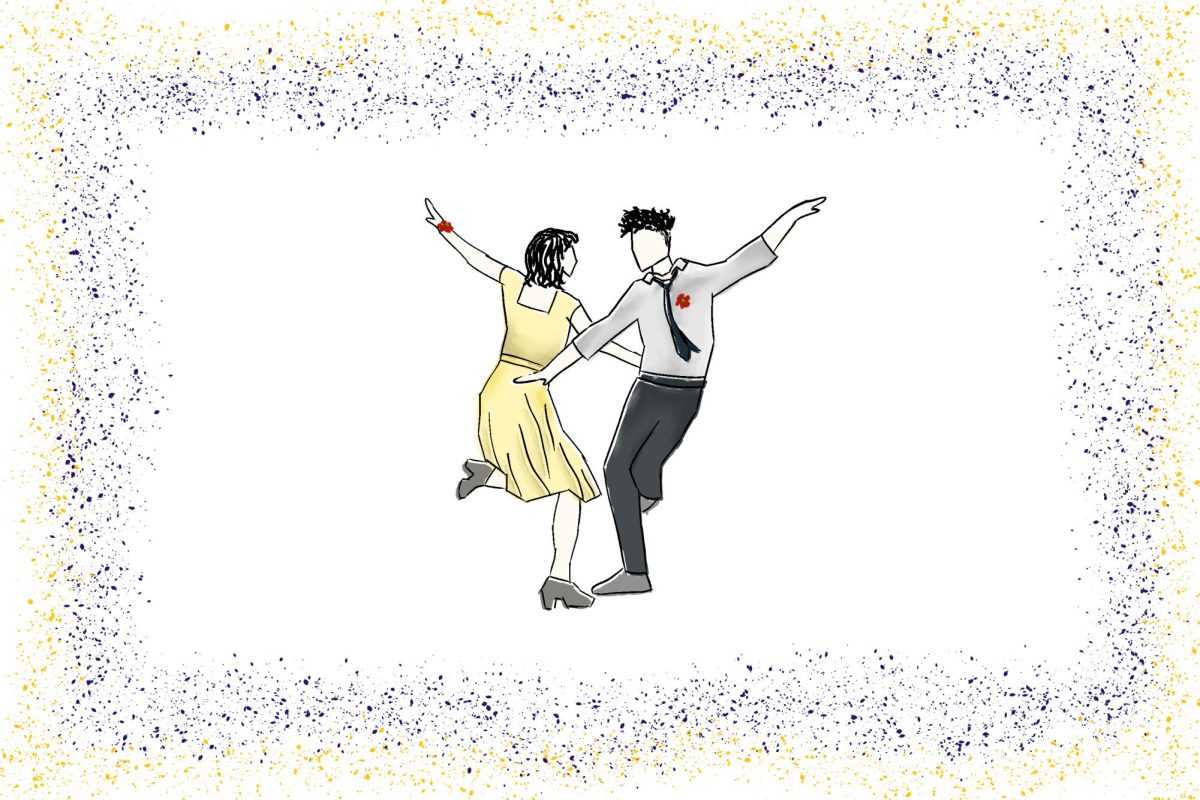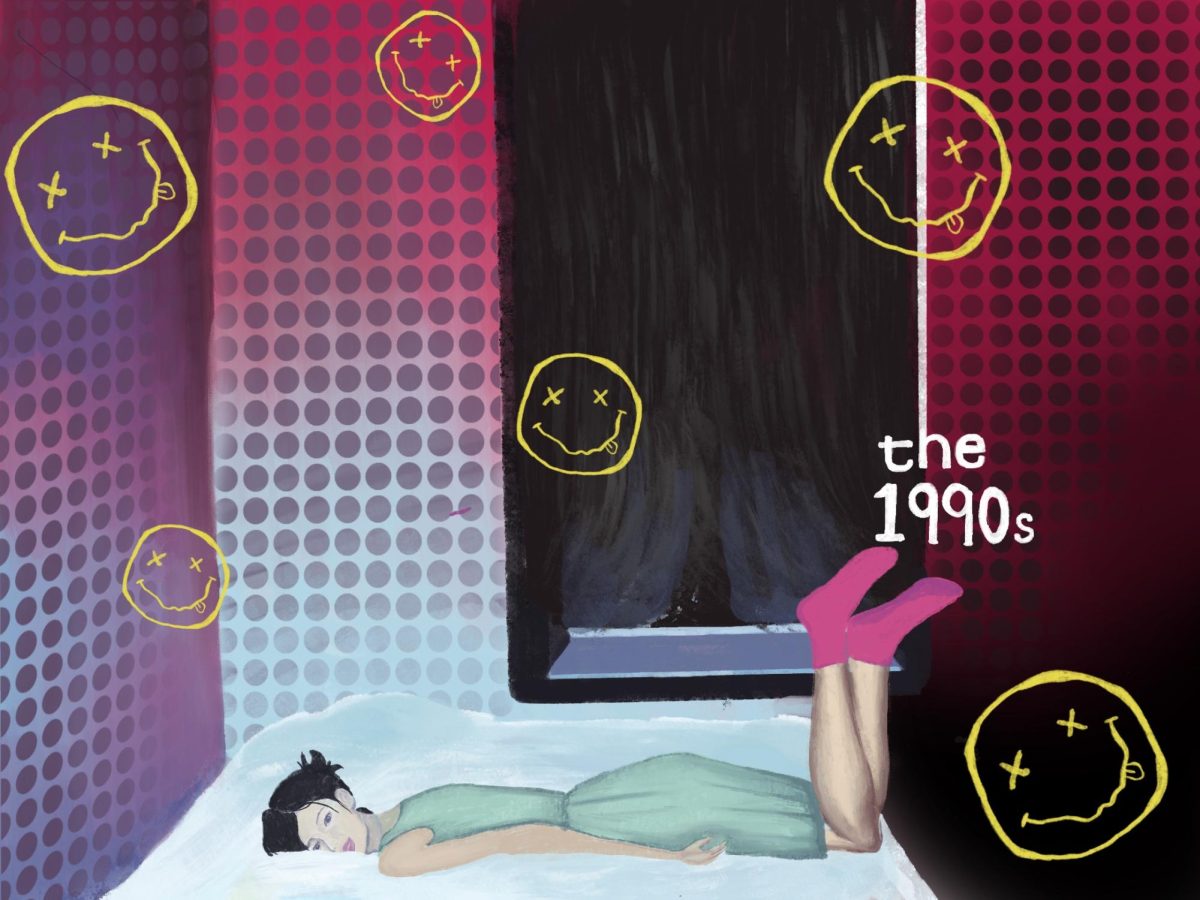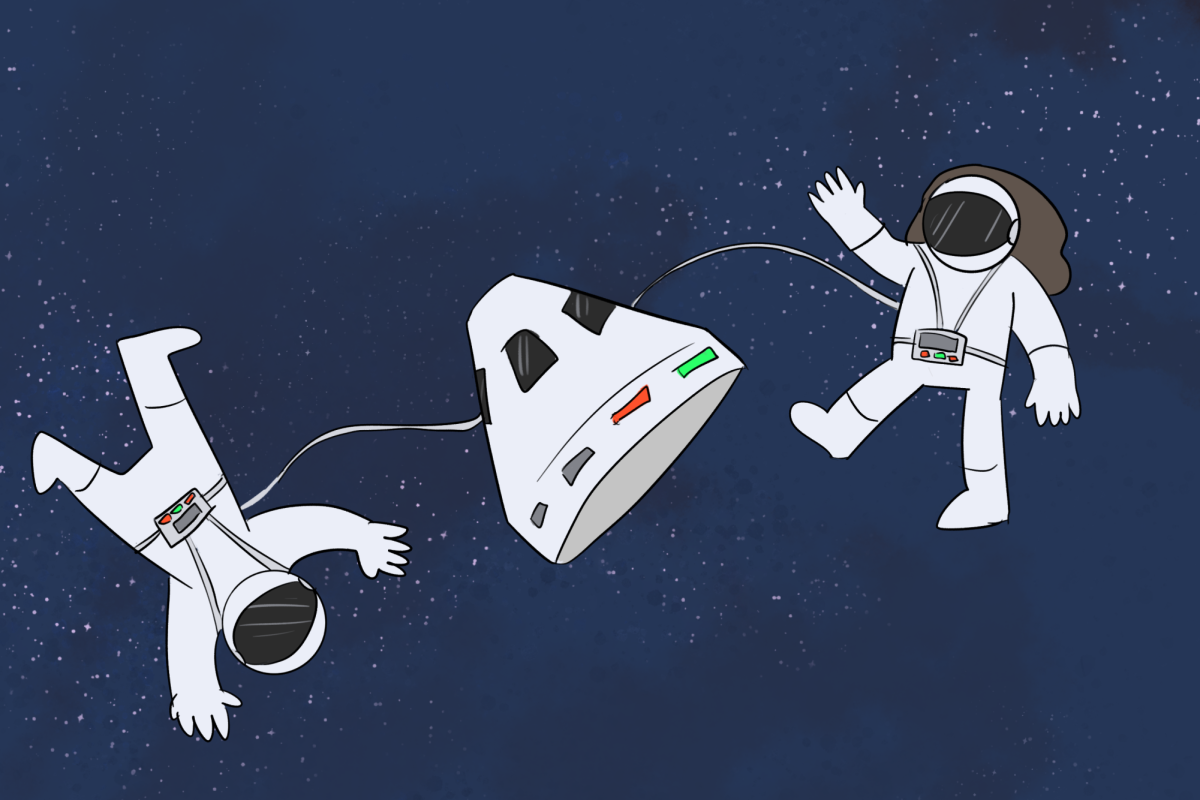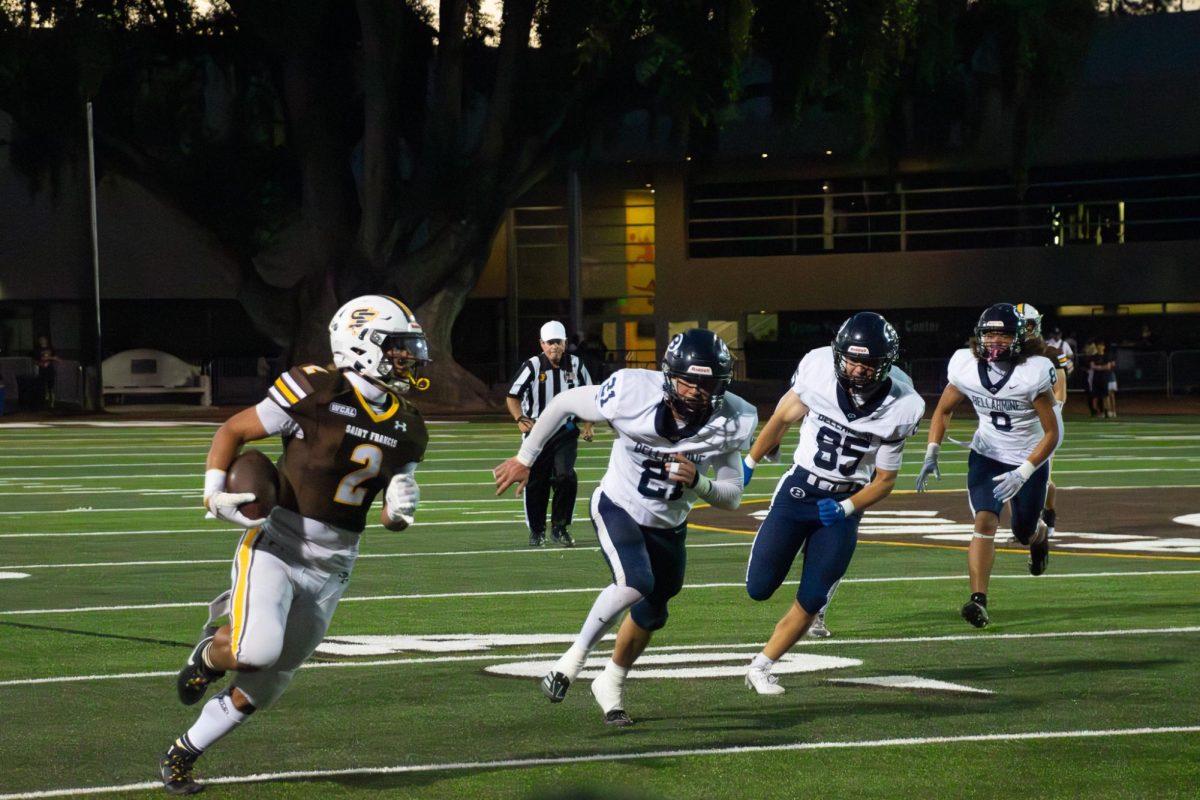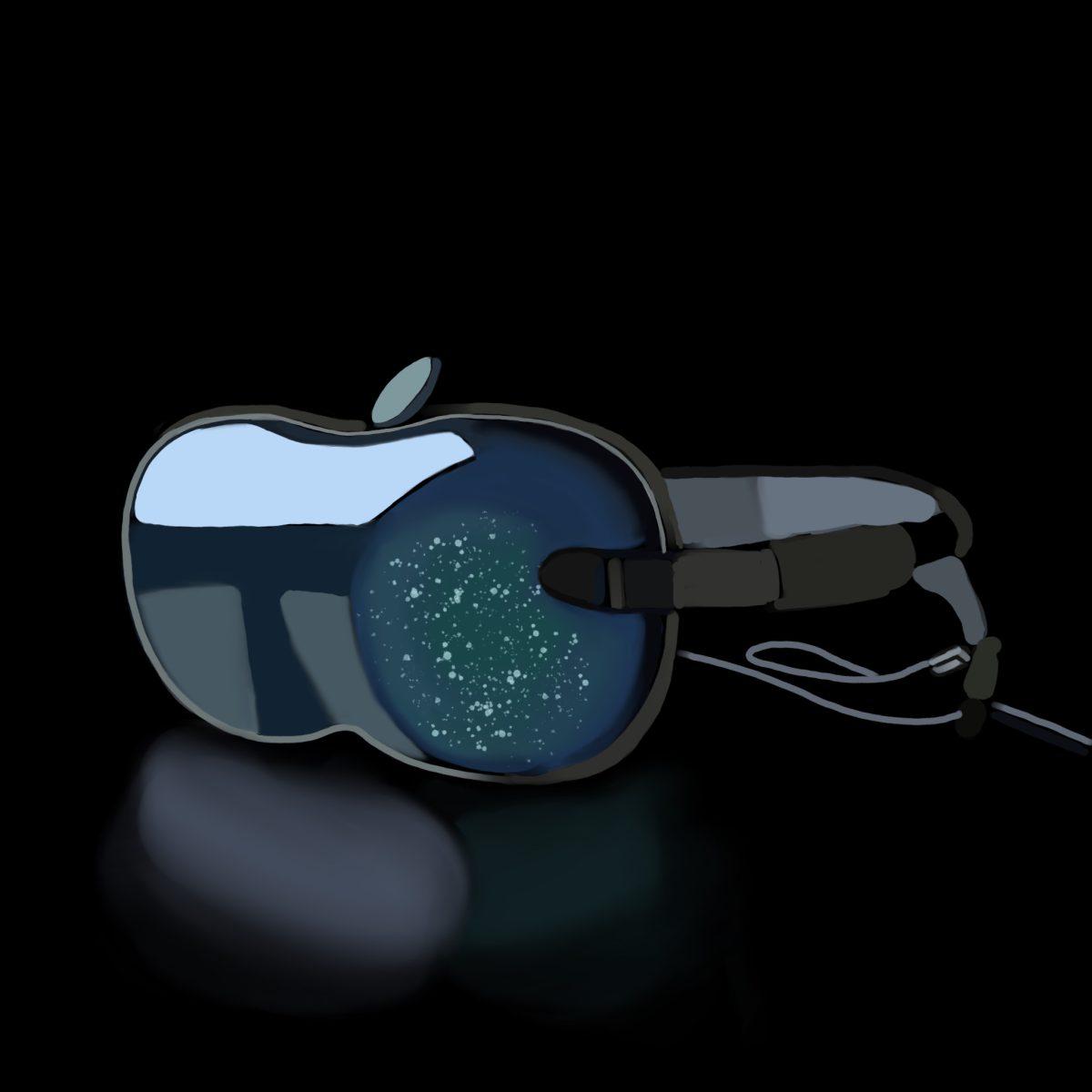In 2016, the hit TV show The Simpsons released an episode where the fictional town of Springfield began using virtual reality (VR) headsets connected to a battery in their pockets. Now, eight years later, their prediction could become a reality. On February 2nd, Apple released a first-generation product called the Apple Vision Pro. The Vision Pro is a VR headset that allows people to live their regular lives in virtual reality—almost like Tony Stark from Iron Man controlling holograms. However, with a hefty price tag of $3500, the Simpsons episode just may take another few years to fully come true.
The first thing one notices on the Apple Vision Pro is the huge glass panel spanning across the entire front. It separates itself from all other headsets by being the first featuring an outwards screen. As viral commercials have shown, the Vision Pro’s outwards facing screen tracks and displays the user’s eye movement.
Another easily noticeable feature is the battery. Unlike VR headsets like the Meta Quest 3, Apple chose to remove the battery from the headset itself and connect it instead using a wire. Although this means users have to walk around with a wired battery in their pocket, it removes weight from the already heavy headset.
The Apple Vision Pro weighs around 1.3 pounds, which is relatively heavy compared to one of its main competitors, the Meta Quest 3, at 1.1 pounds. Due to its weight, the headset requires tighter straps to remain stable on the user’s face. In commercials, the device is displayed with a streamlined Solo Knit Band, which has a sleek striped design running throughout. For more comfort, another option is the dual loop band, which has a strap on both the back and the top of one’s head, making it easier to wear the headsets for longer.
Unlike other headsets, the Vision Pro comes with no controllers. Though it can be paired with Mac’s mouse and keyboard, the device’s main controls are the user’s eyes and hands. With the most advanced and accurate eye tracking of any VR headset, the Vision Pro takes into account the exact place a user is looking at and their hand movement to register clicks or drags. However, this complicates typing, as the user must look at each individual key to type every letter.
This advanced eye tracking also allows the Vision Pro to have a uniquely immersive experience. Just like in reality, it focuses on the place the user is looking and slightly blurs the rest of their field of view. This both helps the performance of the headset and is unnoticeable because one’s eyes do the same thing. The Vision Pro also features very high resolution cameras underneath the frontal glass panel that capture the user’s surroundings. Because of this, the headset is reported to have great “passthrough,” a feature that makes it seem like the user is seeing the real world through the headset. It also features premade environments, such as workshops or the moon, that can fully immerse users in various locations.
Lastly, the Vision Pro seamlessly pairs with other Apple devices, like the MacBook. The headset allows the user to adjust the size of the Macbook screen in VR while simultaneously running other built-in headset apps. Users can place things all around their surroundings and have multiple windows running everywhere they turn.
Overall, the Apple Vision Pro is the likely the most advanced headset that exists today. With a price of $3500, it features great immersiveness, compatibility with other devices, eye tracking, and passthrough. However, since it is a first-gen product, there are drawbacks such as comfort, difficult typing, and an external battery. As Apple continues to work on new generations of this product, the price tag will most likely go down as quality and accessibility goes up.





